Kevin Marti Has Been Driving FoMoCo History for 50 Years
If Kevin Marti were to run a Marti Report on the VIN for his Dark Brown Metallic 1967 Mercury Cougar four-speed convertible, it would come back as a Lime Frost 1967 Mercury Cougar three-speed coupe. For a lot of people, those might be “walk away” red flags. But Kevin Marti’s okay with them.
“When I was a boy,” he says, “I had an uncle who had a convertible. He drove it to our house one day, and I’d never seen a car that didn’t have a top on it. He took us kids—my brother, my sister, and I—for a ride around the block.” Marti has been hooked on manual-transmission convertibles ever since. “It’s just kind of my thing.”
He bought that ’67 Cougar when he was 16, his first car. “Because it had a roof on it, and because they didn’t make convertibles that year, I cut the roof off.” The day after Marti graduated high school he went over to his girlfriend’s house, borrowed her dad’s circular saw, and that was that. He never stopped to consider a thing like provenance. Or structure, it turns out—without the roof in place, he couldn’t open the doors. “Had to do the Dukes of Hazzard thing to get into the car.” His local Ford parts guy finally convinced him to go buy a junkyard Mustang convertible and strip the essential bits, then the two men put things right. “The doors opened, after that,” he says. “And it even has a power top.”
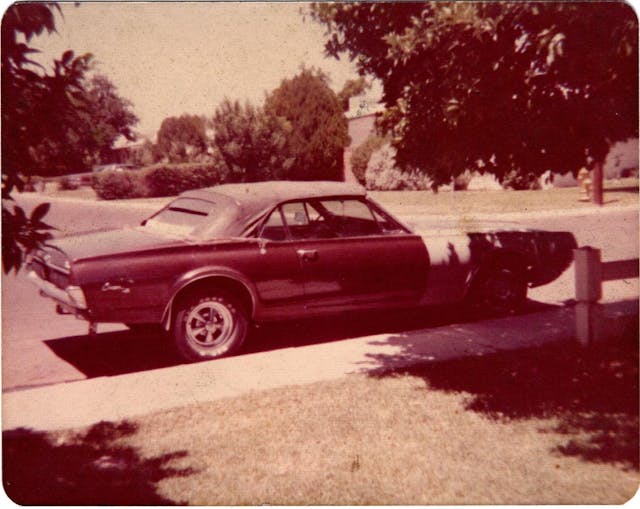
In this hobby, you cannot account for that kind of history. No chassis tag or fender stamping or VIN plate will have it. What our cars’ various tags and stamps and plates do have, of course, are the facts, a sort of industrial DNA. Nobody understands the intersection of these two vastly different stories better than Kevin Marti, who for the last four decades has made a name for himself in the Ford-shaped corner of our world, first with a thriving parts business and then with his eponymous Report.
“We don’t play with the data,” he says. “The data is as the car got built, not as the car is.”
That, in short, is the elevator pitch for a Marti Report, which itself is the production story of a given Ford, Mercury, or Lincoln built since 1967—all the components, both standard and optional, that went into and onto a car, and when and where that all took place.
Obtaining your own report is a simple online affair, with results available in three to 14 days, depending on the vehicle year and a few other factors, although same-day rush service is available. Marti designed the process for people who aren’t computer savvy, and all you need to get started is a VIN. From there, you can choose from one of three different reports—Standard, Deluxe, or Elite. The $20 Standard Report is the perfect pre-purchase documentation and provides you with all the basic information about production, like the car’s original color, interior, powertrain, and options, along with decoded information from the door tag, so you know that the car you’re looking at is—or is not—as it left the factory. The $55 Deluxe Report equips you with all the above information, plus a depiction of the door tag, details about the dealership that sold the car new, and several significant dates associated with the car, like the order date, the date(s) of assembly, and the date it sold. It also features statistics about the car to put it into context against others that were similarly equipped. Finally, the $300 Elite Report arrives on blue matte board in a 16×20 frame, which displays everything from the other two reports, along with a reproduction window sticker and personalized production statistics. They are often the documentation you see on easels at car shows, and it’s not uncommon to see the facts and figures culminate with “one of one.” We’ll come back to that.
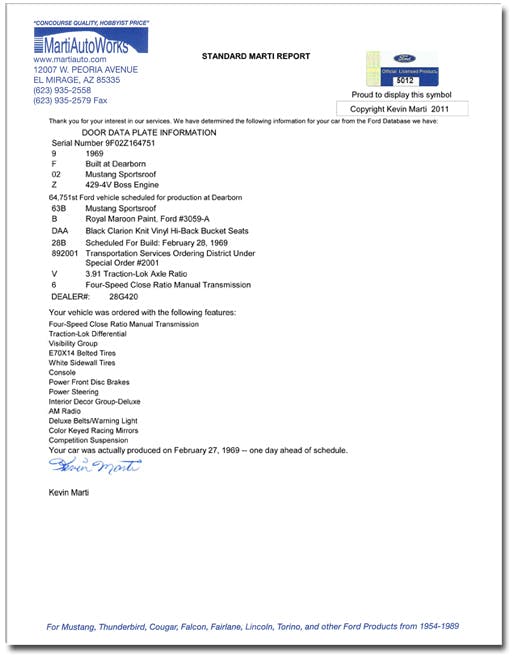
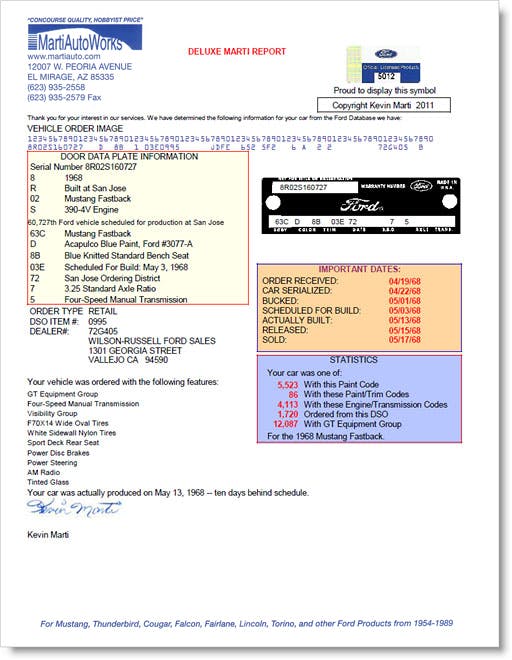
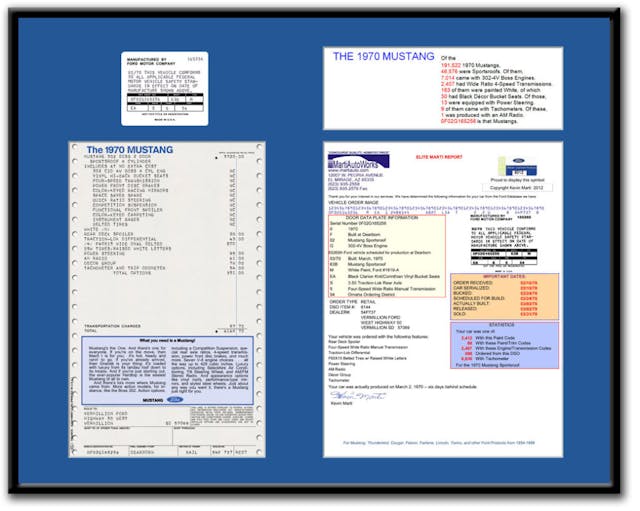
The 67-year-old Phoenician is a mechanical engineer by trade, and he grew up around cars, learning to work on them from his dad, a mechanic. “I guess somewhere around age six or so I started handing him screwdrivers,” he says. Marti spent the first part of his career in R&D for Sperry Flight Systems. In his off time, he says, “I just kept playing with cars and working on them.” In the late 1970s, he bought a second car and then a third, both of which he still owns. (Marti is not one to get rid of cars.) He also started raiding local wrecking yards for original soft bits—battery cables, radiator hoses, and the like—to put on his cars to make them look factory original. “Nobody was doing that kind of stuff back then.”
At shows, other car owners took notice and asked how they could get their hands on similar items. Original parts in yards weren’t infinite, of course, so Marti figured out how to reverse engineer and manufacture them. This was the genesis of a small side business making reproduction fan belts, radiator and heater hoses, and battery cables, and he and the family sold them at car shows. The big change, however, came in 1982.

He’d just finished restoring a Cougar Eliminator, only to learn the stripe kit wasn’t available anymore. “I was distraught, because that’s what helps make that car.” Sperry was a large company that never threw anything away, which made Marti wonder if Ford was the same way. Maybe it had kept the tooling? What ensued was a long series of phone calls, to various departments, to several different people, trying to get some answers. Finally, he learned that the stripe kits had been farmed out to 3M, so he turned his attention there. “This was back in the days when you had to pay for long distance, and I ended up with $150 monthly phone bills.”
After six months of sleuthing, he reached a guy in 3M’s decorative products division. “He says, ‘Oh yeah, we’ve got that tooling. I can see it from my desk. But that’s not our property. That’s Ford’s property.’ But he had no idea who I needed to talk to.” Back to Ford he went, until eventually Marti got hold of an MG enthusiast there who understood the pain of trying to track down crucial parts. “He went to bat for me internally and really helped put the deal together,” he says. Marti wrote a check to Ford, Ford issued a purchase order to 3M, 3M manufactured a batch of 50 stripe kits, and shipped them off to Marti.

People who had seen Marti’s pleading ads in issues of Hemmings and elsewhere looking for a stripe kit occasionally reached out to see if he’d ever tracked one down. “As a matter of fact…” came his reply. “That’s really what started the business,” he says. Soon after, he took a call from Shelby parts supplier Tony Branda Performance, in need of ’69 Boss 302 stripe kits. “A little while later, Ford discontinued kits for the 1970 Boss 302s, and so over the course of the next couple of years, I found myself with this reasonably sized side business of selling stripe kits made by 3M off of Ford’s original tooling.”

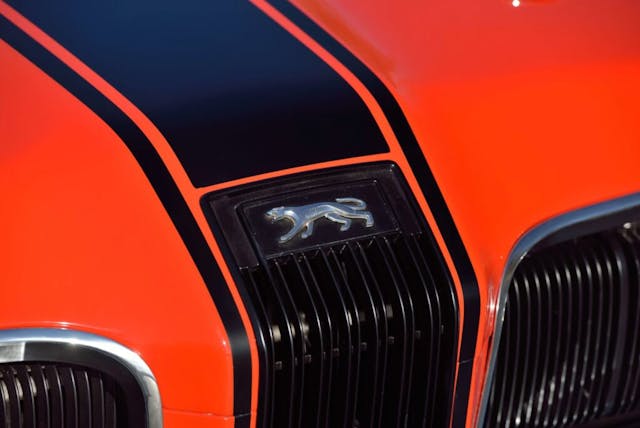
The entire time, he never stopped restoring cars, for himself and for others, and in amongst it all he got his hands on an original stamping machine for door data plates, fell down a data rabbit hole, and began selling repop plates as well. All from the cramped confines of the Marti family home, with wife Shelli as invested as he was. Often she was stamping radiator hoses at the dinner table, then feeding the family on that same table an hour later.

Disenchanted with corporate bureaucracy at Sperry, Marti left the company around 1985 to focus on Ford parts supply full-time. In the early ’90s, he learned the company still had all of its data, and instantly he saw the benefit for car owners. Marti the engineer had the software experience to decode it. He just needed access. But proprietary information was not the same as rubber hoses and vinyl stripe kits.
“Various departments had to sign off allowing all this to happen, including the office of legal counsel.” Marti knew the lawyers had the potential to be the “is this really going to help Ford?” stumbling blocks. “But there was one lawyer who liked the way we did our business, and he kind of stepped up and said, ‘I can vouch for this guy. He won’t misuse our data.’ He really made it happen.”
As a result of his unique access to Ford’s industrial DNA, Marti developed relationships, then friendships, with many of the people running the company. Edsel is a friend. Bill is a friend. It’s a situation not lost on him. “There’s an interesting dynamic at Ford that doesn’t really exist at many of the other car companies. There’s so much family involvement and pride in the name, and there’s a deep sense of nostalgia because of that. Their name is on the cars and it doesn’t matter if those vehicles are 50 years old. You don’t have that with Chevrolet. And the Dodge brothers aren’t exactly involved with Stellantis.”
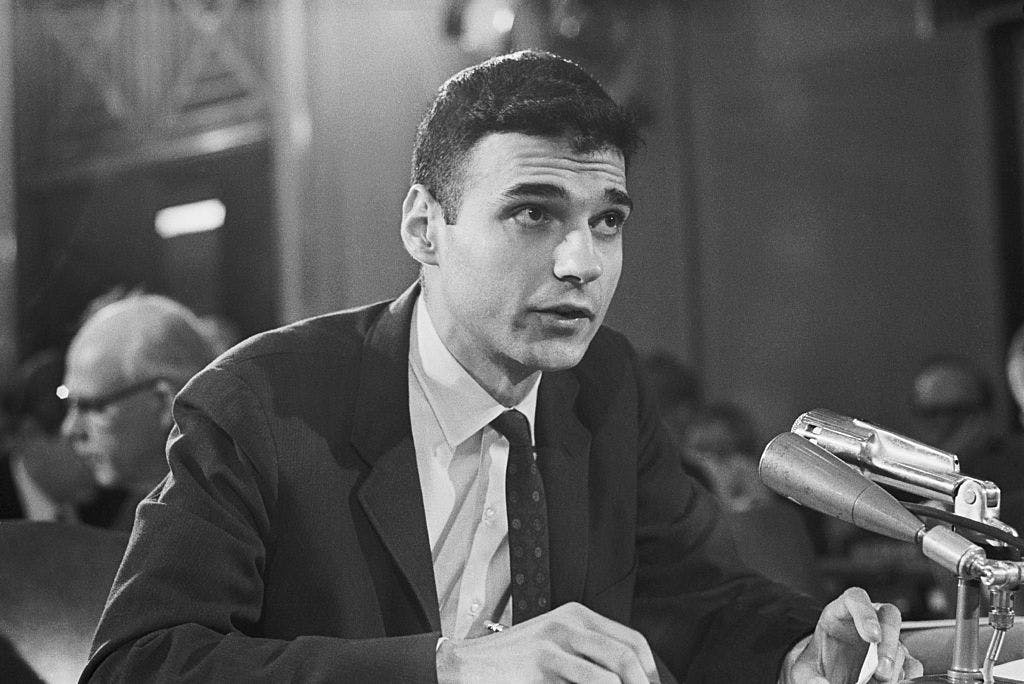
Marti acknowledges Ralph Nader’s indirect role in all of this, too. It was Nader’s revealing investigation into the auto industry, and his book, Unsafe at Any Speed, which led to the 1966 passage of the National Traffic and Motor Vehicle Safety Act. Among other things, it required carmakers to start keeping records of their vehicles and who owned them, for recall purposes. The 1967 model year was the first to benefit from the greater transparency. “Now, it wasn’t indefinite,” says Marti. “Kind of like with IRS tax records, they only had to keep them for a given time, something like 10 years. It just so happened that Ford never got around to throwing them out.”
There was a period early on, Marti argues, that someone might have talked to the powers that be at General Motors or Chrysler, and they could have been issuing the same kind of reports for Corvettes and Camaros, Challengers and ’Cudas. “But life just didn’t go that way.”
As a result, those verifying the authenticity of Chevys and Mopars must do so without the backing of period microfilm or original paperwork. Their certification rests on the physical examination of the car and its telltale signs.
But people manipulate things. People fake numbers all the time. “It’s just that in the Ford world, you really can’t,” Marti says. “You can attempt to. Plenty of people have tried. You can alter the VIN on a Ford, but as soon as someone orders a report on that car, there’s no hiding it.”
Which helps explain why so many Ford owners are proud to display their Marti Reports. Beyond automotive pride, however, there’s a real-world value component. Marti himself has little regard for prices—he’s in it for personal history, remember—but based on discussions he’s had over the years with people who monitor classic car sales, he argues a report “typically adds 10 percent to the value of a car simply because you can’t fake it.” Hagerty valuation data, based upon thousands of monitored sales, largely agrees, especially for first-generation (1965–73) Mustangs. For vintage F-series pickups, the bump is around six to eight percent, while Broncos of any year tend to see a 12 percent increase in value.

Not all Fords are created equal, of course, and Marti has been involved in verifying some serious machinery, including both original Bullitt Mustangs. Hagerty covered one of them, the movie’s “hero car,” extensively in 2018. That car’s owner, Sean Kiernan, originally went to Ford to help with authenticating the car. In turn, Ford sent him to Marti, who was able to go see the car, work with Kiernan, and fully document its history. Kiernan eventually sold the car, and its $3.74M price tag in 2020 made it the most expensive Mustang of all time.
Another search on a rare Ford came from Colin Comer, a classic car restorer, dealer, historian, and former Hagerty contributor, who has ordered hundreds of Marti Reports over the years. In 2016, Comer encountered a 1969 Ford Bronco in a Phoenix wrecking yard that didn’t quite add up. “When I found the Holman-Moody Bronco Hunter, the only thing that proved it was that truck was getting the hidden VIN off the frame and sending it to Marti,” says Comer. “And it came back as a special-build promotional vehicle. That allowed me to connect the dots, and I bought it on the spot. A same-day report that confirms something like that is a crazy value.” Comer spent 2400 hours restoring the Bronco and sold it privately in 2020 for well into six figures.
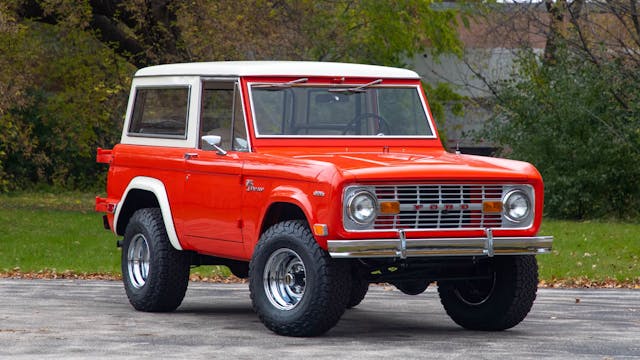
Now, a truck like the Bronco Hunter is the rolling definition of one-of-one. There really isn’t anything else like it. All too often, however, we see that label applied far and wide to auction listings. So what does it mean? Not as much as you might think, Marti argues. “Okay, so say you’ve got total 1967 production of 497,303 cars, and this many were hard tops. Of those, this many came with this engine. Of those, this many came with that engine-transmission combination. Of those, this many were painted this color… Back then, the way cars were built, there were so many color choices, so many interior choices, so many options available. There were literally millions of combinations, which meant almost every car built was unique in some way.” If you keep drilling down, in other words, you’ll arrive at one-of-one.
Kevin Marti, you might argue, is one of one. He loves what he does, and he loves being able to provide this service to enthusiasts, but he recognizes he can’t do it forever. He and Shelli have four kids, but only one of them is involved in the business, along with a grandchild. The others have their own careers, their own lives, and he’s proud of each of them. “I mean, we forced them all to work here in the summers when they were teenagers,” he says, “but that was just to instill a work ethic in them.” The future of Marti Auto Works doesn’t rest on family legacy—Marti has been working behind the scenes for some time to put a plan in place for both the parts manufacturing and the data business.
“I’ve spent the last 20-some years working alongside an excellent programmer, and we’ve been building this operation to be 100 percent automated, with the goal to make it something that survives my death.” Profits, he says, will be dispersed to worthwhile organizations trying to make the world a better place. Order a report, do some good for people who need it most.
Before all that, however, Kevin Marti has no intention to step away. “I’d like to put in fewer hours so my wife and I can spend more time going on trips,” he says. “But I can’t sit around and play golf every day. I don’t see retirement coming until my brain just doesn’t function properly.”
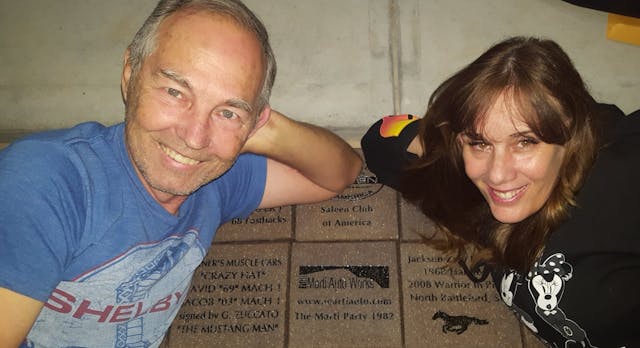
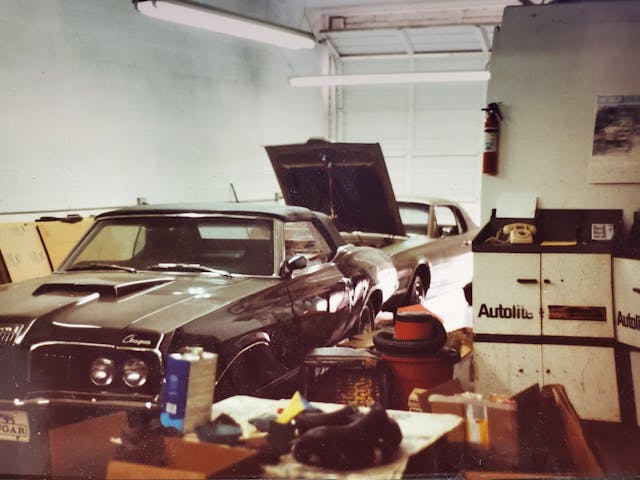
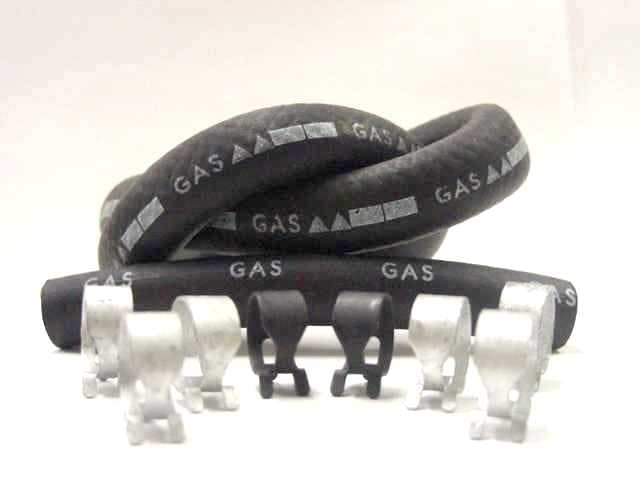
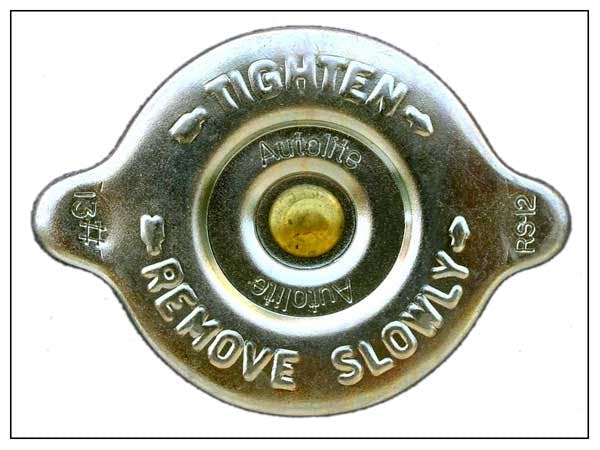
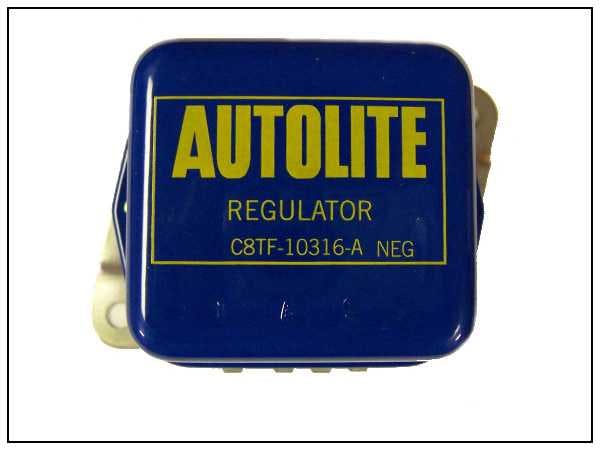
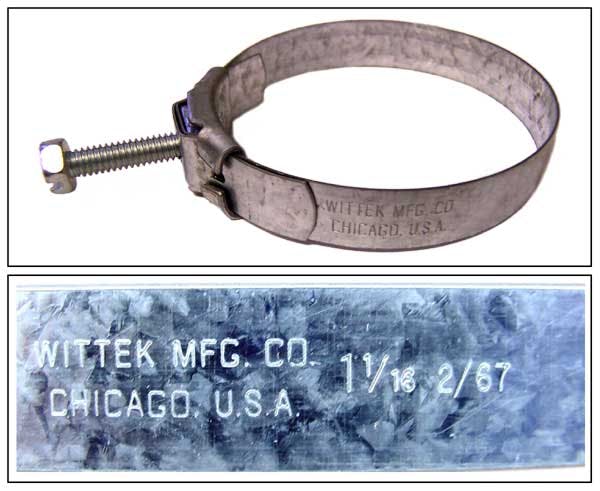
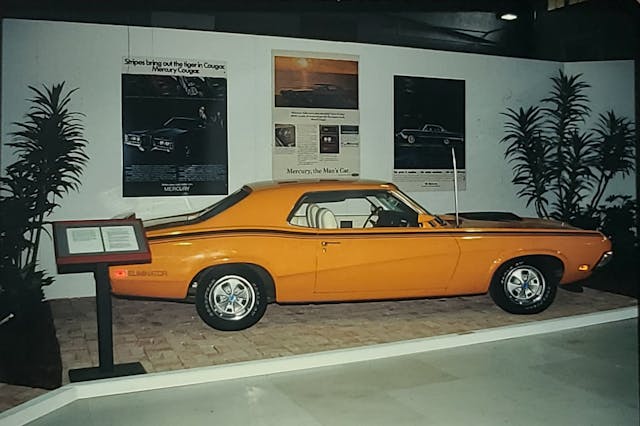
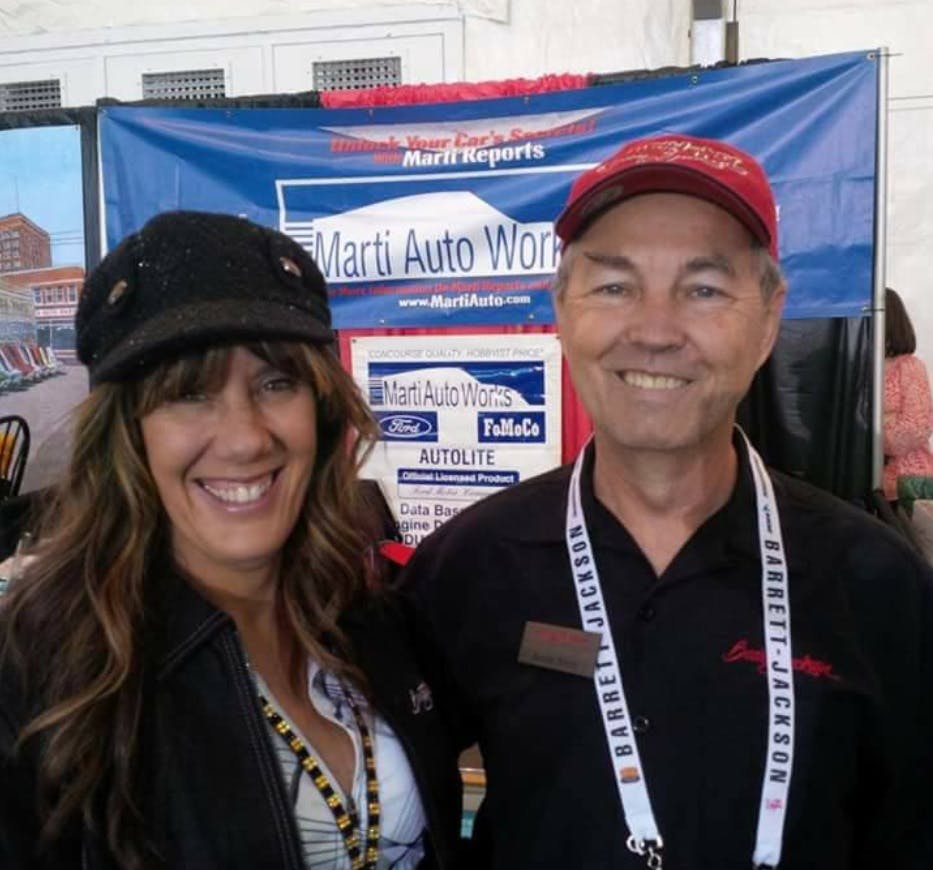
Kevin and Shelli Marti.Kevin Marti
***
Check out the Hagerty Media homepage so you don’t miss a single story, or better yet, bookmark it. To get our best stories delivered right to your inbox, subscribe to our newsletters.



Doing a 67-68 Cougar Convertible has been on my bucket list for a long time. The perfect- ‘Who wants to go to the beach!’ car . I always thought somebody must have done it, here it is. Kevin Marti , no big surprise makes sense. A Mustang top will work. Of course I am a Ford man, it’s in the DNA. Relatives who worked at the Mahwah, Edison plants. One of them could have helped build this Cougar for all I know. My father briefly as well and as Bill Elliot said; ” I swear if you cut him he’d bleed Ford blue”. So this article was of particular interest to me including the more than appropriate Cosby ‘200 MPH’ album cover in the shop window. Woman who are willing to stamp radiator hoses are hard to find. Donating money to worthy organizations is a fine goal.In short if we’re talking about ‘real’ one of ones Mr. Marti sure seems to be the genuine article.
Paul, you are so right. You will not find another woman like my wife, Shelli. Not only did she “put up with” my car hobby, she likes the cars so much she drives a 2007 Shelby Hertz convertible.
Used the Marti report service years ago, product exceeded my expectations.
I haven’t acquired any Fords since, otherwise I would have used it again.
Since I must. When watching the YouTube video I didn’t see any of the Ford promotional model cars that the dealers had and were then typically given to new buyers . A separate collection?
There is one GM brand you can get history and build data from: Pontiac. From Pontiac Historical Services.
I’d like to visit the Service Center Museum sometime! I’ve purchased a number of reports over the years and Kevin’s data and insight was very helpful for my Bronco history book a few years ago. A true asset to the hobby!
I own a 1969 Ford Cobra Formal Roof documented 32,000 mile Real Survivor Car, I’m the 3rd owner/caretaker of it, It was featured in numerous car magazines from the late 80’s and 90’s, the gentleman I bought it from had owned it since 1981. It has a full Marti Report for the car, interesting that it was built with a 3.50 “open” /standard rear axle being a Cobra Jet, who know why. The one interesting note about this car is that the original trunk lid displays the Cobra Emblems but also has the Fairlane Emblem, which I confirmed from the previous owner was present when he purchased the car from the original owner in 1981. On the original bill of sale from the first owner the car is only listed as a Cobra. I have never seen another Fairlane Cobra before. Still trying to figure out what happened, could have just been an assembly line faux pas. I did enjoy reading the article on Kevin, I wonder if he may have any insight?, Thanks Bob Krug
I had no idea Kevin Marti started with a 67 Cougar. That was my high school dream car. I talked my Dad into buying a 67 when they came out and I bought it from him when was a senior in high school. Great memories.
I am a Cougar guy at heart, but I own several old Fords. 2 67 Cougars, a 68 Cougar, a 67 Mustang, a 69 Mustang, an 83 Mustang T top and a 2013 Mustang. All of the 60’s cars have many of Marti’s repo parts on them (hoses, regulators, etc). I have purchased many of his reports also. As a matter of fact, I had purchased an old “junk” 68 Cougar parts car from a field once that had a staggered shock brace in the trunk which I had never seen. It looked originally installed so I purchased a Marti report for it to find out it was actually a 1 of 11 428 R-code 4 speed Cougar!
Kevin Marti helped me greatly about 20 years ago while I restored my 1966 Thunderbird, specifically with engine compartment restoration. I had several phone calls with him where he explained the back story of many items, such as why one of the factory ignition wires had an orange connector, and why NOS replacement wires did not. Kevin Marti is a significant contributor toward a segment of Ford restorations! Nicely written article.
Very cool story. Love to see the stories of the people who keep this hobby going.
I was looking (not very hard) for a convertible for many years. I own a 68 Shelby. When I seriously started to look for a convertible I was not sure what I would get, but it would be a Ford. I was first looking at a large car, LTD, or Continental. I decided too big. I aimed at a Mustang, Cougar or Torino. About seven years ago I bought a 1970 Cougar XR7 convertible. After I ordered the Marti report, I realized I had a 1 of 56 car. 351C 4 barrel carb. and a 4 speed trans. I have been very happy with it. Fun to drive around in.
Terrific article. For each of our vintage pony cars (1969 Shelby GT500, 1973 Mustang Convertible, & 1973 Mach 1 Mustang) we oedered Marti Elite Reports. For each of the cars it validated how oeiginal they still were, or in the case of the 73 Mach 1, I was abe to tell what was not original (not a bad thing, all changes were enhancements). For folks at car shows who try to tell me more about our ony cars than is they know, it is always nice to be able to pull out the scanned image of the Marti Report and speak from aa position os absolutely correct knowledge. And for anyone trying to figure out anything about their Mustang or Shelby I tell them befre they get too far along they need to order a Marti Report so they can begin their journey from a know good starting place.
I had no idea Kevin had spun a side interest into a career. Hurrah! I did much the same kind of thing within the computer industry, where I saw a huge lack of data car dealers were forced to live with by their ihouse computer vendors. I found a way to derive raw data from those olk, ancient contruct computer systems, and spun the data into liquid gold when importing it into micro-computers, using database and spreadsheet programs. What began as a novelty turned into me creating and operating a much sought out business where I could help any dealer with any data analysis need imaginable. What made it so much fun is that I saw the whole situation as being correctable by the large conputer vendors, but it took them over 25 years to finally get around to kind of provide similar capabilities. They nevr really caught up to me and my capabilities, as their focus was on monetizing their solutions. My focus was on getting the dealers what they needed and asked fork, and havng fun doing it. I never had to worry about profitability, and had nobody I had to go to for authorization to take on a certain kind of project. Many of my projects ended up not gneratingg huge volumes of income, but they always ended up having dealer clients whp would come back time and again for other solutions that were definitely profitable – and for very little money from the clients as the volume was so large. I loved it, and on ended my journey when afflicted with rbain cancer 10 + years ago. I survived the ilfe saveing surgeries, but tneded up receiving an unsolocited offer to acquire my firm. The buyers are as committed to the auto retail dealer induestry as I was, so I agreed to sell and retire, hanging my spurs up after a 3 decade long run of playing for a living.
Anyway, Kudos to both Kevin and his wife. They have brought significant value to a large number of admirers who appreciate their contribution to our hobby.
I wanted to get the original window sticker for my 1982 MarkVI, but I couldn’t see on the Marti website that they had it available
Good story!
What an amazing story. I had no idea (Chevy guy here) had heard of Marti Report, but again, super cool back story